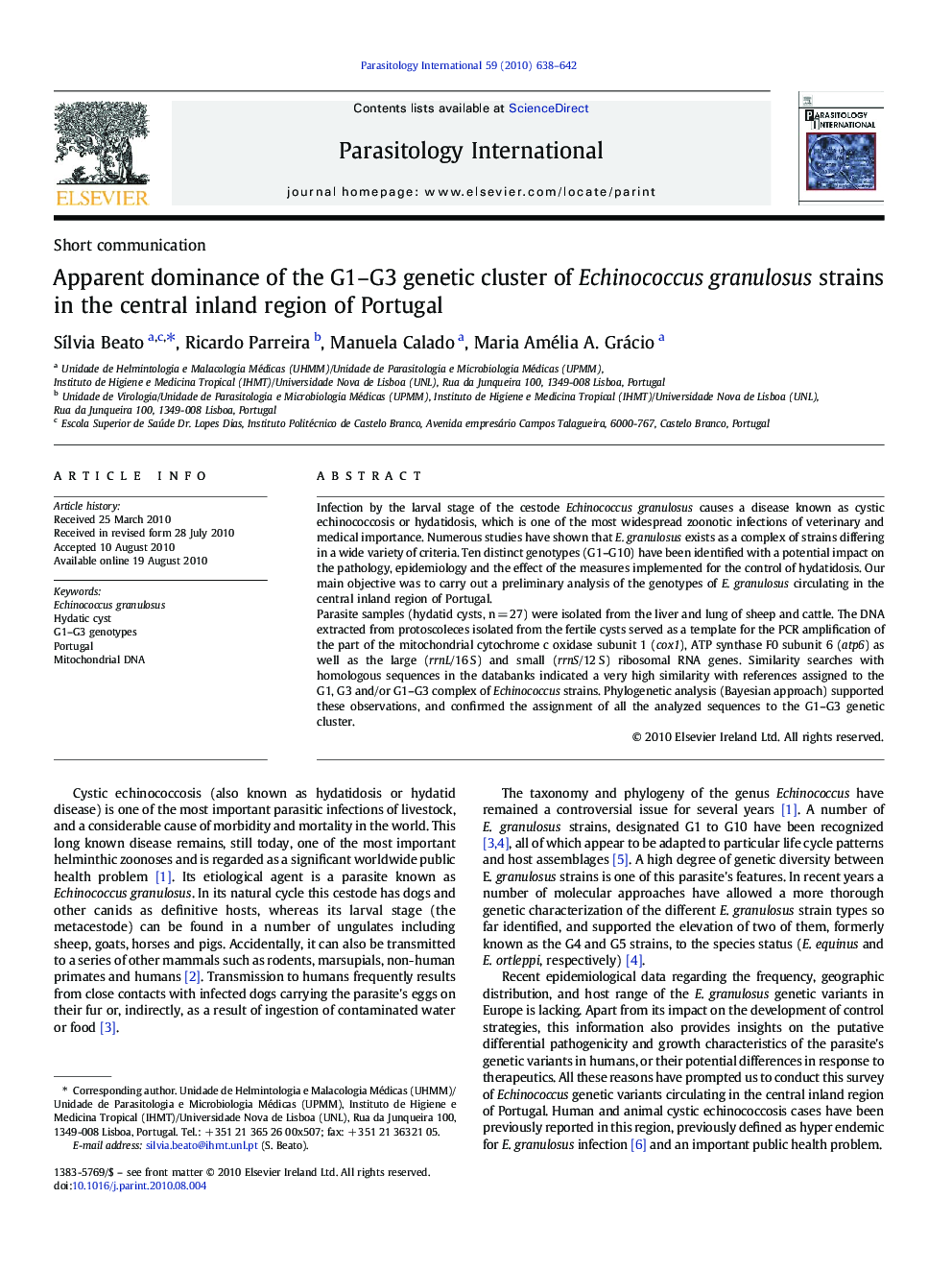| Article ID | Journal | Published Year | Pages | File Type |
|---|---|---|---|---|
| 3418101 | Parasitology International | 2010 | 5 Pages |
Infection by the larval stage of the cestode Echinococcus granulosus causes a disease known as cystic echinococcosis or hydatidosis, which is one of the most widespread zoonotic infections of veterinary and medical importance. Numerous studies have shown that E. granulosus exists as a complex of strains differing in a wide variety of criteria. Ten distinct genotypes (G1–G10) have been identified with a potential impact on the pathology, epidemiology and the effect of the measures implemented for the control of hydatidosis. Our main objective was to carry out a preliminary analysis of the genotypes of E. granulosus circulating in the central inland region of Portugal.Parasite samples (hydatid cysts, n = 27) were isolated from the liver and lung of sheep and cattle. The DNA extracted from protoscoleces isolated from the fertile cysts served as a template for the PCR amplification of the part of the mitochondrial cytochrome c oxidase subunit 1 (cox1), ATP synthase F0 subunit 6 (atp6) as well as the large (rrnL/16 S) and small (rrnS/12 S) ribosomal RNA genes. Similarity searches with homologous sequences in the databanks indicated a very high similarity with references assigned to the G1, G3 and/or G1–G3 complex of Echinococcus strains. Phylogenetic analysis (Bayesian approach) supported these observations, and confirmed the assignment of all the analyzed sequences to the G1–G3 genetic cluster.
